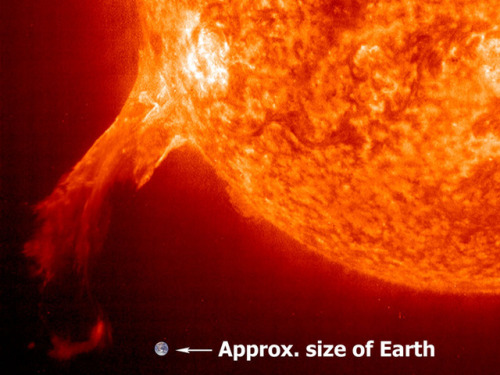Artificial Intelligence And Robotics Are Booming At The Moment, Soon Robots Will Start Replacing Humans
Artificial Intelligence and Robotics are booming at the moment, soon Robots will start replacing humans at work, is your job at risk?
More Posts from Knowledgeiskeyuk and Others
Is your job at risk from robots and artificial intelligence? Watch this video to find out more or visit our website: https://knowledgeiskey.co.uk/articles/job-automation

Will your job still exist tomorrow, or will it be automated? Here are some of the top “at risk” jobs.




Pop.Up, 2017, by Airbus and Italdesign. A concept for an autonomous multi-modal transportation system
We had a visitor from outside the solar system, check out this video about the interstellar asteroid
An asteroid from another star system visited us!
Robot driver coming soon!

Imagine Taking an Uber with a Robot Driver. We’re Not Far Off http://futurism.com/imagine-taking-an-uber-with-a-robot-driver-were-not-far-off/?utm_campaign=coschedule&utm_source=tumblr&utm_medium=futurismnews&utm_content=Imagine%20Taking%20an%20Uber%20with%20a%20Robot%20Driver.%20We%27re%20Not%20Far%20Off

An Erupting Solar Prominence from SOHO
Credit: SOHO-EIT Consortium, ESA, NASA
Ever wondered how hurricanes form?

A.I. could produce ‘a new sector that we probably don’t know about yet,’ Nasdaq vice chair says http://ift.tt/2hdo7tX

I Don’t Want To Work By Zach Allia | More
A few curiosities of astronomy and astrophysics
Astronomy and Astrophysics: Facts
Here is a list of some curiosities of astronomy and astrophysics. From our solar system to interstellar space.

Rings of Saturn: With an estimated local thickness of as little as 10 m and as much as 1 km, they are composed of 99.9% pure water ice with a smattering of impurities that may include tholins or silicates. The main rings are primarily composed of particles ranging in size from 1 cm to 10 m.

Valhalla (crater): Valhalla is the largest multi-ring impact crater on Jupiter’s moon Callisto and in the Solar System. It is named after Valhalla, the God Odin’s hall in Norse mythology where warriors are taken after death.

Europa (lineae): Europa’s most striking surface features are a series of dark streaks crisscrossing the entire globe, called lineae (English: lines). Close examination shows that the edges of Europa’s crust on either side of the cracks have moved relative to each other. The larger bands are more than 20 km (12 mi) across, often with dark, diffuse outer edges, regular striations, and a central band of lighter material. The most likely hypothesis states that the lineae on Europa may have been produced by a series of eruptions of warm ice as the Europan crust spread open to expose warmer layers beneath. The effect would have been similar to that seen in Earth’s oceanic ridges.

Tartarus Dorsa: The western part of Pluto’s northern hemisphere consists of an extensive, highly distinctive set of 500-meter-high mountains informally named Tartarus Dorsa; the spacing and shape of the mountains looks similar to scales or tree bark.

Mountain in Ceres: Ahuna Mons is the largest mountain on the dwarf planet and asteroid Ceres. It protrudes above otherwise smooth terrain, it is not an impact feature, and it appears to be the only mountain of its kind on Ceres. Bright streaks run top to bottom on its slopes; these streaks are thought to be salt, similar to the better known Cererian bright spots, and likely resulted from cryovolcanic activity from Ceres’s interior. It is named after the traditional post-harvest festival Ahuna of the Sumi Naga people of India.

Pluto has a tenuous atmosphere consisting of nitrogen (N2), methane (CH4), and carbon monoxide (CO), which are in equilibrium with their ices on Pluto’s surface. According to the measurements by New Horizons, the surface pressure is about 1 Pa(10 μbar), roughly one million to 100,000 times less than Earth’s atmospheric pressure. It was initially thought that, as Pluto moves away from the Sun, its atmosphere should gradually freeze onto the surface; studies of New Horizons data and ground-based occultations show that Pluto’s atmospheric density increases, and that it likely remains gaseous throughout Pluto’s orbit.

Sagittarius A*: Sagittarius A* is a bright and very compact astronomical radio source at the center of the Milky Way, near the border of the constellations Sagittarius and Scorpius. It is part of a larger astronomical feature known as Sagittarius A. Sagittarius A* is thought to be the location of a supermassive black hole, like those that are now generally accepted to be at the centers of most spiral and elliptical galaxies.

Double Pulsar: PSR J0737−3039 is the only known double pulsar. It consists of two neutron stars emitting electromagnetic waves in the radio wavelength in a relativistic binary system. The two pulsars are known as PSR J0737−3039A and PSR J0737−3039B. It was discovered in 2003 at Australia’s Parkes Observatory by an international team led by the radio astronomer Marta Burgay during a high-latitude pulsar survey.

IC 1101: IC 1101 is a supergiant elliptical galaxy at the center of the Abell 2029 galaxy cluster, approximately 320 megaparsecs (1.04 billion light-years) from Earth. IC 1101 is among the largest known galaxies, but there is debate in the astronomical literature about how to define the size of such a galaxy.

A rogue planet (also termed an interstellar planet, nomad planet, free-floating planet, orphan planet, wandering planet, starless planet, sunless planet, or Planemo) is a planetary-mass object that orbits the galaxy center directly. Such objects have been ejected from the planetary system in which they formed or have never been gravitationally bound to any star or brown dwarf. The Milky Way alone may have billions of rogue planets.
souce: wikipedia
Image credit: NASA/JPL/SwRI, Ted Stryk, John Rowe Animations, commons.wikimedia
"Develop a passion for learning. If you do, you will never cease to grow." Anthony J. D'Angelo. Visit our website at https://knowledgeiskey.co.uk
66 posts